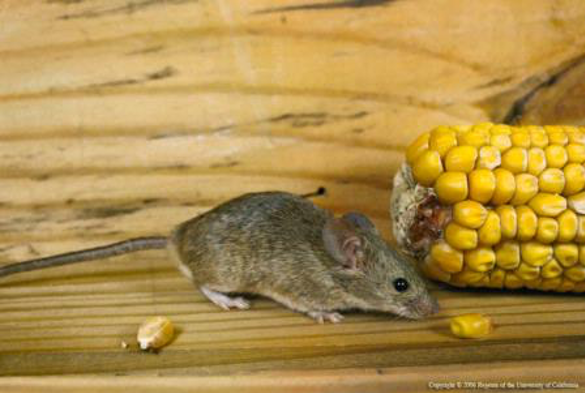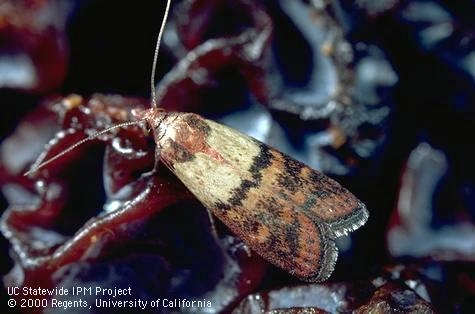It's often easier to prevent pests before they become a problem than to try and get rid of them once they infest a home. While some pests can be active year-round, cooler temperatures trigger some pests to find shelter indoors.
Creatures such as rats or insects are typically looking for food, water, and shelter. Eliminate or reduce access to these resources to deter pests. There are a variety of tools that are readily available which can help block or limit a pest's entrance into the home. Here are a few suggestions to prevent creatures from stirring in your home this season.
Rats, Mice, and Tree Squirrels
- Keep tight fitting lids on garbage cans and compost containers to prevent these rodents from finding a food source near your home and eventually coming indoors.
 House mice prefer grains but will consume many different foods. (Credit: R Marsh)
House mice prefer grains but will consume many different foods. (Credit: R Marsh) - Examine the exterior of your home for signs of rat or mice droppings or other evidence, then seal any cracks or gaps larger than 1/4 inch.
- Thin vegetation between shrubs and buildings using pruning shears or trimmers and trim back overhanging trees.
- Place traps outside your home to catch rodents before they enter. See our previous post on snap traps for more information.
- Screen or block potential entrances under eaves or overlapping roof sections to exclude rodents. Sheet metal or 1/8-inch wire hardware cloth are suitable materials that can keep out rats, mice, and tree squirrels.
Termites
Several types of termites exist in California, including subterranean, drywood, and dampwood species. It is important for you to identify what type of termite you have before managing. Reduce your risk of termite infestation by doing the following:
- Remove wood piles or scrap wood near structures.
- Repair any foundation cracks, plumbing leaks, or exterior defects in structural wood.
- Finish exterior wood using sealants or paints.
Cockroaches
- Monitor for cockroaches using sticky cockroach traps. Commercially available open-ended traps are a good option.
- Remove potential food sources by cleaning up any spilled food or dirty dishes.
- Store food in tightly sealed containers.
- Vacuum cracks and crevices regularly to remove food and debris.
- Decrease clutter, especially in kitchens and bathrooms, to reduce hiding places for cockroaches.
Pantry Pests
Stored-product pests, also called pantry pests, are typically brought into the home from infested packages. The most common pantry pests are moths and beetles.
- Use pheromone traps monitor and detect pests. These are typically available in stores for moths or beetles, and some traps attract several pest species.
- Store food such as flours, grains, and cereals in containers with tight fitting lids and keep them dry to prevent pantry pests.
- Clean shelves, bins, and food storage areas regularly.

(Credit: Jack Kelly Clark)
[Article originally published as "Not a Creature Was Stirring" in the Winter 2019 issue of the Retail Nursery and Garden Center IPM Newsletter.]
